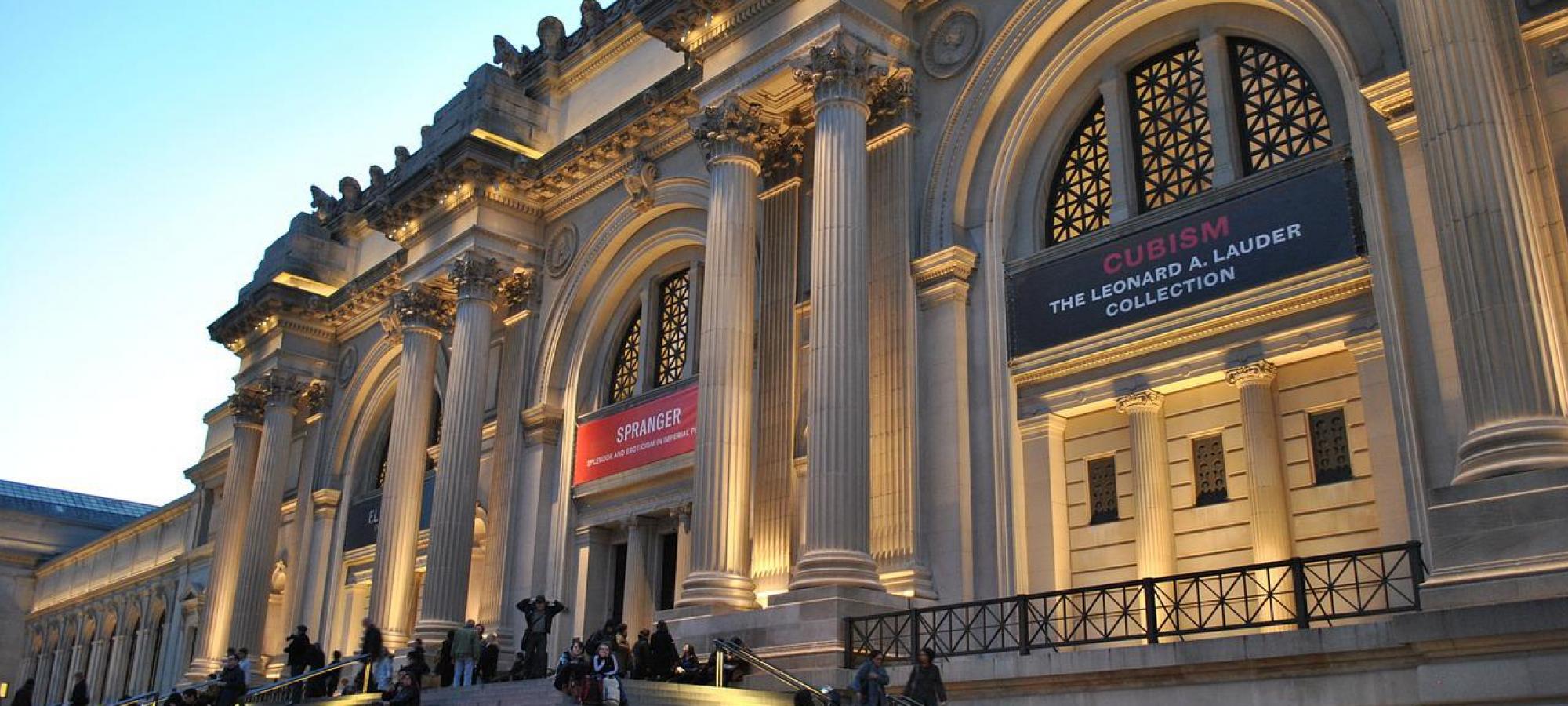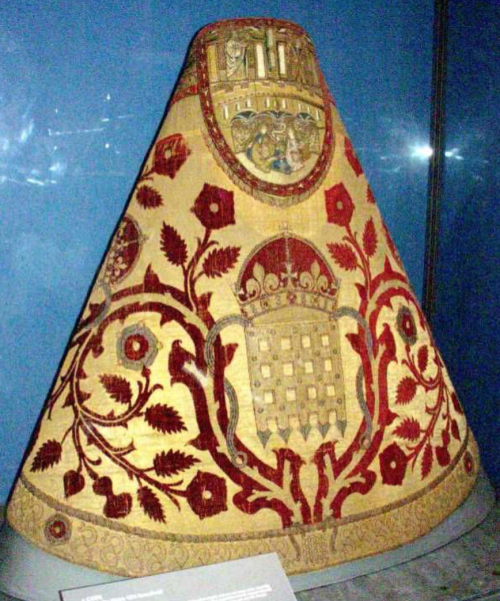
Campion Hall Artefacts Going on US Tour
Between October 2022 and September 2023, artefacts from Campion Hall, Stonyhurst and the British Jesuit Province will be touring the US as part of an exhibition curated by the Metropolitan Museum.
The Tudors: Art and Majesty in Renaissance England is the first exhibition on Tudor patronage to take place in America, and will be displayed in New York, Cleveland, and San Francisco. It will trace the motivations of Tudor art collection policy and its subtle shifts over time from the reign of Henry VII to that of his granddaughter, Elizabeth I. In particular, the exhibits will demonstrate, through the lens of England’s ever-shifting relationship with mainland Europe during the Tudor era, the evolution of a new, distinctly English artistic style.
Previously displayed at the Victoria and Albert Museum for over twenty years and subsequently at Hampton Court Palace, the star piece of the exhibition will be the Province’s Henry VII Cope, one of its most prestigious and significant artefacts. Commissioned in approximately 1495 by Henry VII for use in Westminster Abbey, the cope was not merely a liturgical garment. Rather, the commissioning of such beautiful artefacts was a strategy to exhibit the House of Tudor’s political and dynastic position both in England and in Europe more widely. The cope, in particular—one of the most expensive of these early Tudor commissions—featured prominently in the gesture politics that came to dominate the summit at the Field of Cloth of Gold in 1520 between Henry VIII and King Francis I of France. Miraculously spared from the devastating iconoclastic years of the English Reformation, the cope was removed from Westminster Abbey and taken to an English Jesuit community to ensure its safety, before being later smuggled to the English Jesuit College of St. Omers. During its time at St. Omers, which was founded in 1593 in the then Spanish Netherlands in order to offer a Catholic education for boys from England and Wales living in exile, the cope formed the centre of a pioneering new Jesuit programme of cultural, educational and spiritual formation. Here in exile, the cope served as a reminder to the community of both priests and pupils of the courage of those Jesuits and recusants who had remained in their homeland, where Catholicism continued to be endangered. Its use in the liturgical life of the school demonstrated solidarity with the Catholic community back home and affirmed the specifically English and Welsh Catholic identities of the priests and pupils at St. Omers.
 The cope exudes the opulence of Henry VII’s court, using specially commissioned cloth of gold and red silk damask velvet in a dynastic rose and portcullis design, evoking the red rose of the House of Lancaster and the portcullis of Henry VII’s mother, Margaret Beaufort, in a display of Tudor power. Further embroidery, undertaken in London, depicts the typical Christian iconography of the Annunciation and accompanying saints. Initially part of a set of twenty-nine copes with matching chasubles and dalmatics commissioned for Westminster Abbey, this is the sole survivor. The set was perhaps commissioned for the coronation of Prince Arthur—the older brother of Henry VIII and first husband of Catherine of Aragon; Arthur died before he could ascend to the throne. The set was of clear importance to Henry VII, as can be seen by his specific mention of the set in his will, in which he left them to ‘God and St Petre and to th’ Abbot, Priour and Convent of our Monastery at Westminster…’
The cope exudes the opulence of Henry VII’s court, using specially commissioned cloth of gold and red silk damask velvet in a dynastic rose and portcullis design, evoking the red rose of the House of Lancaster and the portcullis of Henry VII’s mother, Margaret Beaufort, in a display of Tudor power. Further embroidery, undertaken in London, depicts the typical Christian iconography of the Annunciation and accompanying saints. Initially part of a set of twenty-nine copes with matching chasubles and dalmatics commissioned for Westminster Abbey, this is the sole survivor. The set was perhaps commissioned for the coronation of Prince Arthur—the older brother of Henry VIII and first husband of Catherine of Aragon; Arthur died before he could ascend to the throne. The set was of clear importance to Henry VII, as can be seen by his specific mention of the set in his will, in which he left them to ‘God and St Petre and to th’ Abbot, Priour and Convent of our Monastery at Westminster…’
Unique artefacts from Campion Hall — such as Edmund Campion’s Agnus Dei from 1578, found hidden in Lyford Grange where he was eventually betrayed, and his Decem Rationes from 1581 (one of only six copies to have survived) — will travel to New York to be featured alongside the exhibition and other events. Artefacts from the British Province and Stonyhurst will also be displayed, all selected on the basis of their historical significance and their importance to the Tudor era and the English Jesuit mission in the sixteenth century. Among these are a number of crucifixes and relics from Thomas More and various books of hours from key figures in British and European Early Modern history, including Elizabeth Plantagenet, Lady Katherine Bray, Cardinal Wolsey, and Dean John Colet.
Each stop on the exhibition’s tour will include a series of lectures, presentations and other events in order to engage a broad public, including school children, academics, practising Catholics, and those associated with the Jesuit Provinces in each of the three host cities. Indeed, The Tudors: Art and Majesty in Renaissance England promises to be a culturally important exhibition, introducing this rich wealth of unique Jesuit Tudor artefacts to the American public for the first time.
If you are a Campion Hall alumnus living in New York, Cleveland, or San Francisco, and are interested in this exhibition, please get in touch with us at: development@campion.ox.ac.uk

